Archive | Poverty RSS feed for this section
Health, Poverty
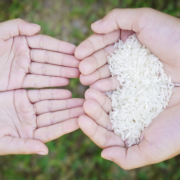 Education, Information and Communications Technology, Poverty, Social development and protection
Education, Information and Communications Technology, Poverty, Social development and protection
 Climate change, Environment, Poverty, Social development and protection
Climate change, Environment, Poverty, Social development and protection
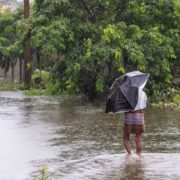 Agriculture and natural resources, Energy, Governance and public sector management, Poverty
Agriculture and natural resources, Energy, Governance and public sector management, Poverty
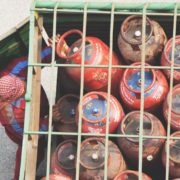 Governance and public sector management, Health, Poverty, Social development and protection, Water
Governance and public sector management, Health, Poverty, Social development and protection, Water
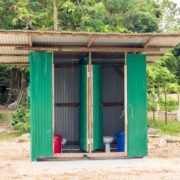 Governance and public sector management, Health, Poverty, Social development and protection
Governance and public sector management, Health, Poverty, Social development and protection
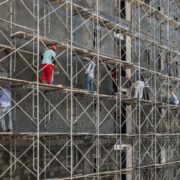 Agriculture and natural resources, Governance and public sector management, Health, Poverty, Social development and protection
Agriculture and natural resources, Governance and public sector management, Health, Poverty, Social development and protection
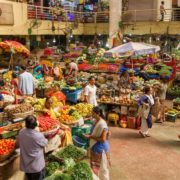 Health, Poverty, Social development and protection
Health, Poverty, Social development and protection
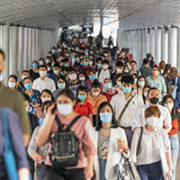 Gender, Poverty, Social development and protection
Gender, Poverty, Social development and protection
 Health, Poverty, Social development and protection
Health, Poverty, Social development and protection

The triple burden of malnutrition in early childhood

Children from disadvantaged groups are particularly prone to developing nutrient deficiencies and growth problems.
Income inequality, educational outcomes, and digital infrastructure: Can public–private partnerships play a pivotal role in Asia and the Pacific?

Addressing inequality requires a new strategy in today’s modern age. Policy makers in Asia and the Pacific need to tackle a new form of inequality—the digital divide.
Protecting victims of climate-induced migration and displacement in South Asia

South Asia is home to a quarter of the world’s population and is extremely susceptible to climate change-induced displacement and migration.
Driving household energy modernization in South Asia amid COVID-19

Policy makers must consider the possible impacts of the pandemic on households’ energy choices and their access to clean fuels.
How can the private sector help solve the sanitation challenge?

The private sector can play a vital role in solving the sanitation challenge. The following four aspects highlight the importance of private sector participation in sanitation in developing countries, including in Asia.
Lessons for the informal sector from COVID-19
By Alessia Destefanis, Tetsushi Sonobe, Dil Rahut and Jeetendra Prakash Aryal. Posted August 13, 2021

The informal sector, which employs over 62% of the global population, is a fundamental source of livelihood for over 2 billion people (ILO 2020). Here, “employment” includes self-employment, and the informal sector refers to the part of the economy that is generally not monitored by a tax authority or other forms of government. Before the outbreak of the coronavirus disease (COVID-19), the informal sector accounted for 87.7%, 51.5%, and 55.7% of the population in low-, middle-, and high-income countries, respectively (ILO 2018a).
Rebooting food systems to achieve the unfinished agenda of global food security

Food insecurity continues to be a pressing issue worldwide, despite scientific innovation and technological advancements in agriculture. Therefore, food security continues to be at the center of the global development agenda. The burgeoning demand for food due to exponential growth in the world’s population and the mismatch between demand and supply due to factors such as climate change, loss of soil fertility, land degradation, water scarcity, food loss and waste, and inefficient distribution systems, have exacerbated the problem of food insecurity.
COVID-19 hitting migration and remittances hard in developing Asia
By Aiko Kikkawa Takenaka, James Villafuerte, Raymond Gaspar and Badri Narayanan. Posted August 25, 2020

The coronavirus disease (COVID-19) pandemic has devastated economies worldwide, slashing jobs and incomes. The Asian Development Bank (ADB) (2020a) estimates that employment in Asia and the Pacific will fall by as much as 167 million jobs in 2020 should containment measures last 6 months from when the outbreak first intensified in the respective countries. In turn, wage incomes in the region are projected to fall from $359 billion to $550 billion.
How can trade liberalization boost women’s employment and well-being? An analysis of the Thai labor market

As the economy is a gendered structure, trade liberalization affects women and men differently in various dimensions and through different channels. Trade liberalization causes structural transformation in terms of production and, therefore, leads to changes in employment patterns and income. However, the effect of trade is heterogenous across different sectors.
Barefoot doctor 2.0: Making it happen

Over 50 years ago, a pioneering medical system was launched in the People’s Republic of China (PRC). Known as the “barefoot doctors” scheme, the program liberalized healthcare beyond doctors and allowed some 1.5 million community health workers to practice basic medicine after 3–6 months of training. This effectively created a national network of healthcare services for the very first time, increasing rural healthcare coverage to 90%.


Search
Subscribe / Connect to Asia Pathways
Subjects
- Agriculture and natural resources
- Blog
- Capacity development
- Climate change
- Economics
- Education
- Energy
- Environment
- Finance sector development
- Gender
- Governance and public sector management
- Health
- Industry and trade
- Information and Communications Technology
- Infrastructure
- Miscellaneous
- Population
- Poverty
- Private sector development
- Regional cooperation and integration
- Sanitation
- Social development and protection
- Transport
- Uncategorized
- Urban development
- Video Blog
- Water
Recent Posts
- Artificial intelligence: A new driver for inclusive growth and development?
- Increasing trust in cross-border e-commerce and artificial intelligence
- Enhancing access to maternal and newborn healthcare in developing Asia
- Can electric vehicles lead the way to a sustainable future?
- Mitigating climate-related sovereign risk to accelerate action on the climate emergency




Recent Comments